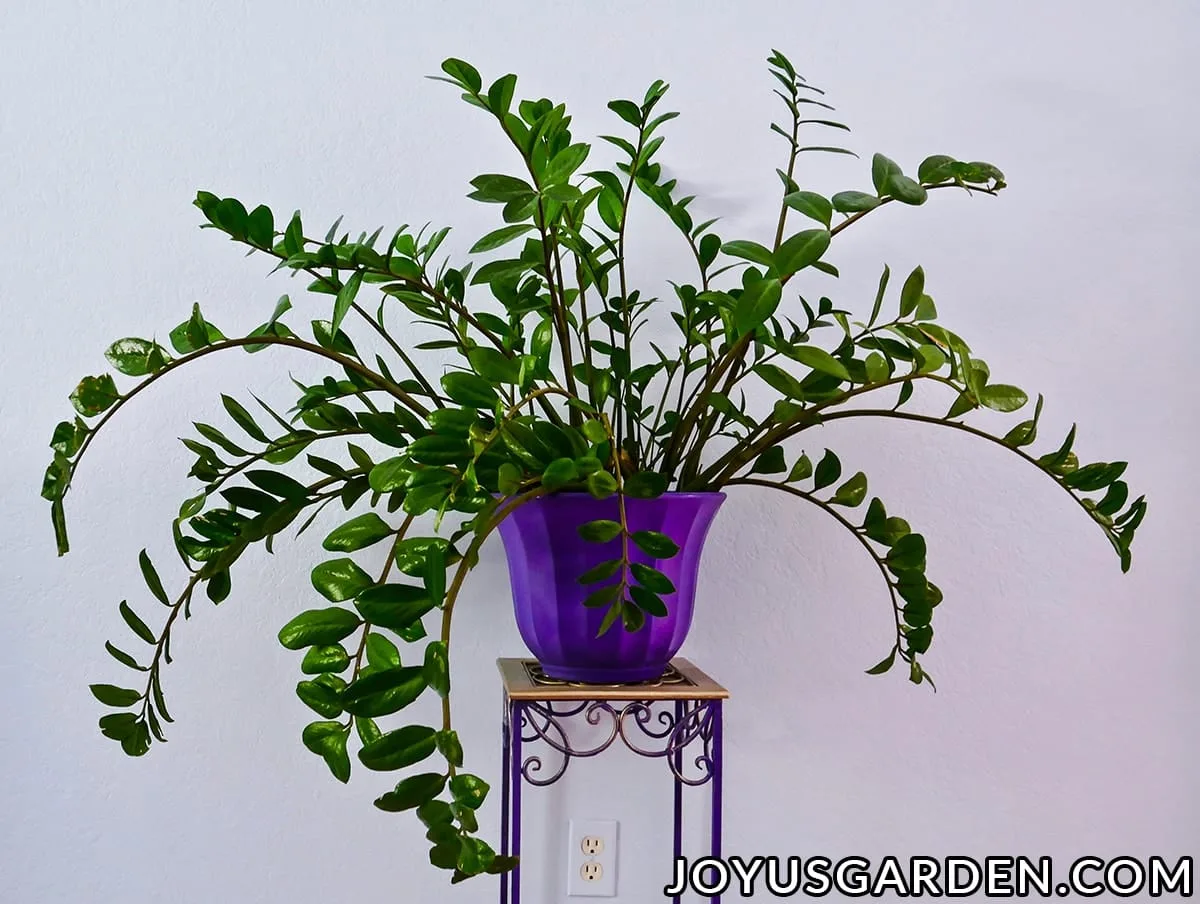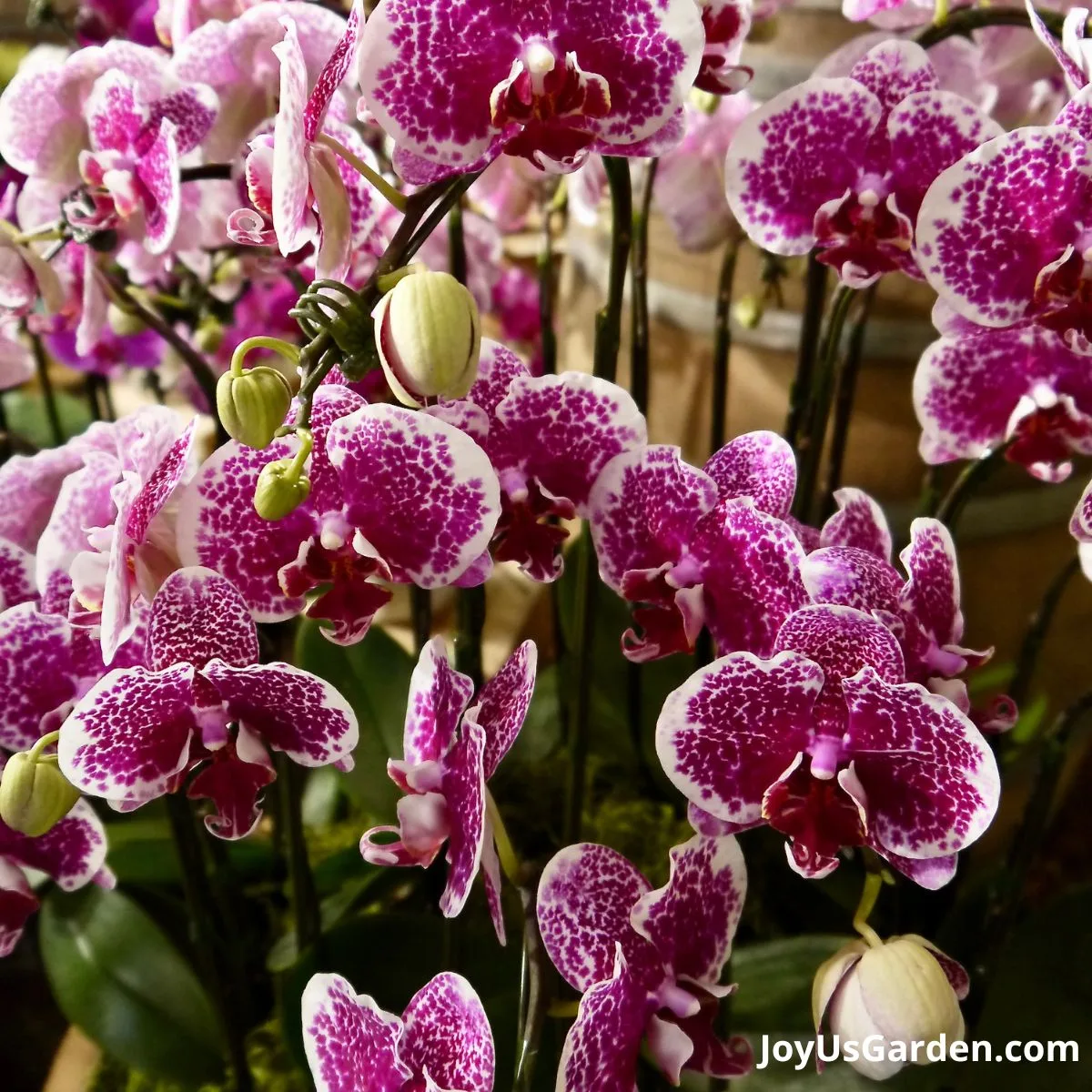How to Fertilize Indoor Plants: Ways to Feed Houseplants
Houseplants can benefit from regular feeding. Here are tips and recommendations on how and when to fertilize indoor plants to keep them healthy and growing.
Are you a houseplant lover like me? If you are, then you’re in the right place! Even if you only have 2 or 3 houseplants, at some point they’ll appreciate some nourishment. Fertilizing indoor plants keeps them healthy and helps them to grow strong.
I lived on the California coast for 30 years and now live in the Arizona Desert. The higher humidity and even temperatures on the coast are a more desirable growing climate for houseplants. The outdoor humidity here in Tucson is often below 15% (subtropical and tropical houseplants prefer it around or above 50%), and the air conditioning in our homes dries out the air even more.
I didn’t have nearly as many houseplants in San Francisco and Santa Barbara as I do now. I never used fertilizer then but fed them yearly with worm compost and compost.
Now that my houseplant collection has grown by leaps (60+ and counting!), I decided it was a good idea to start a fertilizer regime to up the ante on the nourishment factor. I want to make it easier for my green babies and show them some love in this hot, dry climate.
I’m sharing all of this with you in case you’re searching for a method to feed yours.
All About Fertilizing House Plants

When To Fertilize Indoor Plants
Spring and summer are the best. If you live in a climate with temperate, warmer winters as I do, then into early fall is fine too.
I stop fertilizing my plants in mid to end of October because they’re not actively growing at this time. I let them be in the cooler, darker months and start feeding again in mid-February.
When my plants are putting new growth and new leaves, it’s my sign to start feeding. For you in a different climate zone with a shorter growing season, feeding two or three times per year may do it for your indoor plants.
We have a long growing season here in Tucson (the sun shines a lot here!) and my houseplants appreciate it. In a colder climate, you may start feeding in late March or April.
Fertilizing Indoor Plants in Winter
As I said above, I don’t fertilize my indoor plants in winter because it’s not their active growing season. I also cut back on the watering frequency during this season.
More on Houseplant Care in Winter.

How Often to Fertilize Indoor Plants
It depends on what you’re using. Be sure and follow the instructions on the label. Too much fertilizer is not a good thing. It can cause an excess of salt build-up, leading to root burn.
The growing season is long here in Tucson (March – October) so I probably fertilize for longer than you will. Here’s how often I feed during that time:
I apply the worm castings/compost at the end of March. I do 1 application every other year. More details a few paragraphs down.
I use 2 fertilizers once a month starting in early March and ending the process at the end of October. One month I’ll use Maxsea, the next month Grow Big, and the next Maxsea, etc. Both are water-soluble fertilizers.
Many of the houseplant fertilizers say you can feed with every watering but I feel once a month for 7 months is enough.
If your plants are in low light, they’re not growing as much or as fast. In that case, fertilizing 2 or 3 times a year will be plenty.
Some Of Our General Houseplant Guides For Your Reference: Guide To Watering Indoor Plants, Beginner’s Guide To Repotting Plants, How to Clean Houseplants, Winter Houseplant Care Guide, Plant Humidity: How I Increase Humidity For Houseplants, Buying Houseplants: 14 Tips For Indoor Gardening Newbies

Types Of Houseplant Fertilizers
You can find so many different types of fertilizer and indoor plant foods on the market these days that provide the essential nutrients houseplants need.
There are liquid fertilizers, granular fertilizers, slow-release fertilizers, and fertilizer sticks. Some are synthetic fertilizers, others organic fertilizers, and then there are natural fertilizers like banana peels, coffee grounds, and egg shells.
Most houseplants like a balanced n-p-k ratio which will be listed on the fertilizer label. In a nutshell, Nitrogen is for foliage, followed by Phosphorous for roots and flowering, and Potassium for overall functioning (also good for flowering).
Plants like bromeliads, orchids, and African Violets have different needs and prefer specific types of foods.
Our homes can be tough environments for tropical and subtropical plants. To promote healthy growth, combat a nutrient deficiency, and keep your plants strong, feeding them is beneficial.
The bottom line is that the best type and brand of fertilizer is the one you like the best. You can easily switch to a different fertilizer if you aren’t seeing results because there are so many available. Or, you can alternate between two brands as I do.

3 Ways I Feed Houseplants
1. Worm compost/Compost
This is the way I’ve fed my houseplants for years. I now use a locally produced worm compost as well as a local compost. Both are organic and provide beneficial micro-organisms to increase microbial activity in the soil.
These natural ingredients work symbiosis with plant roots to provide mineralization, make plants stronger, and improve overall health. Just like a healthy microbiome is good for us humans, it’s good for the soil too.
For a 6″ grow pot, I apply a 1/4″ layer of the worm compost with a 1/4″ layer of compost over that. For a 14″ grow pot, I apply a 1/2 – 1″ layer of each. Easy does it, use small amounts even though this is a natural way to feed houseplants. You can still overdo it.
I apply the worm compost/compost duo in early spring every when the weather is warming. I used to do it every year, but now I’ve switched to every other year.
As I say, happy soil, happy plants!
For more, here is the full guide: How to Feed Houseplants Naturally With Worm Compost & Compost
2. Grow Big
For years I used Eleanors VF-11. It’s a non-burning formula (many commercial fertilizers can cause root burn) that can feed the foliage as well as the roots. As of the end of 2020, it’s been unavailable even though their website is still up.
I’ve switched to Grow Big which supports vegetative growth (good for leafy houseplants!) and enhances plant size and structure. It’s a liquid fertilizer also and is very easy to use.
This is another popular plant food. My friend in San Francisco has used this all-purpose granular fertilizer for many years and swears by it.
It’s a balanced seaweed formula with over 60 recognized elements and micronutrients that benefit plants. It benefits the foliage and promotes strong, vigorous growth.
It’s a balanced NPK formula (16-16-16), the 3 primary nutrients plants like. In a nutshell, the 1st is Nitrogen for foliage, phosphorus for roots and flowering, and Potassium for overall functioning (also good for flowering).
Other fertilizers/foods I’ve used and liked: Liquid Kelp, Superthrive (these are vitamins you can use in conjunction with fertilizer), and Fish Sh!t.
Note: You can use worm compost, compost, Grow Big, and Maxsea on outdoor plants in containers and in the garden also.

Other Fertilizers For Houseplants
So many types of fertilizers and plant foods that are available to us these days. Where to begin?!
I have by no means tried many of them. I want to include some other fertilizers/plant foods that friends have used or that are popular in case you want to give one or two of them a try.
They include Joyful Dirt, Espoma, Neptunes Harvest, Miracle Gro, Osmocote, Jobe’s, and Superthrive.
How To Fertilize Indoor Plants Video Guide
Tips For Fertilizing Indoor Plants
Don’t Overdo It
Too much fertilizer can burn the roots of plants if the concentration is too strong or if you apply it too often. In the garden, salts leach out of the soil easier than in a small grow pot.
For example; if your houseplant is looking sad, and the fertilizer calls for a ratio of 1 oz per gallon, don’t up it to 4 oz per gallon thinking you’ll help the plant.
To play it safe, you can use fertilizers or indoor plants at 1/2 strength to avoid burn.
Don’t Fertilize A Plant That Is Bone Dry And Stressed (wilting or drooping)
Water it as you normally would and let it recover before fertilizing.
Pay Attention To The Lighting
If your plants are in low light, fertilize them less often. The growth is slower and so is the rate at which the soil dries out.

Fertilizing Houseplants FAQS
I don’t. Plants rest in the winter months and resume active growth in spring. Hence the term spring growth!
It isn’t necessary but they’d appreciate it and their overall health will be better and stronger. As the potting soil gets older, the need for fertilization increases.
Plus, a healthy plant can better fight off diseases, pest infestations, etc
Spring and summer are best in most climates.
Read what the label on the jar, bottle, or package says and follow that. I feed my plants once a month in their active growing season.
I’m not sure if it matters. Perhaps there have been some studies on this but I haven’t read any.
I fertilize my plants in the morning or afternoon because that works for me. Besides, I can see the pot and soil better in the daylight!
You’ll see burned leaf edges (brown edges), brown or yellow leaf discoloration, the new growth will be smaller, and/or the plant wilts.
If the burn isn’t too bad, you should be able to flush the salts out of the soil with water. The plant may or may not recover, depending on the damage to the root systems. You may need to repot your plant into fresh soil mix.
Can you over-fertilize Indoor plants?
You sure can! Less fertilizer is better than more fertilizer. Too much fertilizer (the amount and/or frequency) leads to root damage.
Plants like orchids, bromeliads (including air plants), and African Violets benefit from specialized foods.
The majority of tropical and subtropical indoor plants like balanced npk (nitrogen, phosphorous, potassium) ratios of 15-15-15 or 20-20-20.
What is the best homemade fertilizer for houseplants?
Honestly, I have more experience with this subject in regard to garden plants and not houseplants.
The homemade fertilizers that I’m familiar with are made from eggshells, coffee grounds, and banana peels. If I were to use any of them for indoor plants, I make them into tea.

Note: This post was published on 10/3/2020. It was updated on 11/22/2022 with more info & new images.
The best fertilizer choice is up to you. Whether you choose 1, 2, or 3 of these methods of fertilizing indoor plants, they will be happier. Remember, don’t go overboard with the fertilizing!
Happy gardening,

Here are some of our houseplant guides you may find helpful: 6 Low Maintenance Plants For Travelers, 11 Pet Friendly Houseplants, Tips For Buying Houseplants, Best Low Light Indoor Plants, Easy Care Office Plants, 7 Easy Care Floor Plants, 7 Easy Tabletop & Hanging Plants
This post may contain affiliate links, you can read our policies here.






Thank you for this great information. I have been doing it wrong!!
Julie – This is the way I do it & so far so good! You can try 1 or all 3 of these methods & see how your plants respond. Nell